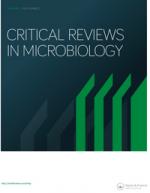Citation:
| 5_22_2018_bacterioly.pdf | 1.13 MB |

Abstract:
The role of bacteriolysis in the pathophysiology of microbial infections dates back to 1893 when
Buchner and Pfeiffer reported for the first time the lysis of bacteria by immune serum and related
this phenomenon to the immune response. Later on, basic anti-microbial peptides and certain
beta-lactam antibiotics have been shown not only to kill microorganisms but also to induce bacteriolysis
and the release of cell-wall components.
In 2009, a novel paradigm was offered suggesting that the main cause of death in sepsis is due
to the exclusive release from activated human phagocytic neutrophils (PMNs) traps adhering
upon endothelial cells of highly toxic nuclear histone. Since activated PMNs also release a plethora
of pro-inflammatory agonists, it stands to reason that these may act in synergy with histone
to damage cells. Since certain beta lactam antibiotics may induce bacteriolysis, it is questioned
whether these may aggravate sepsis patient's condition. Enigmatically, since the term bacteriolysis
and its possible involvement in sepsis is hardly ever mentioned in the extensive clinical
articles and reviews dealing with critical care, we hereby aim to refresh the concept of bacteriolysis
and its possible role in the pathogenesis of post infectious sequelae.

